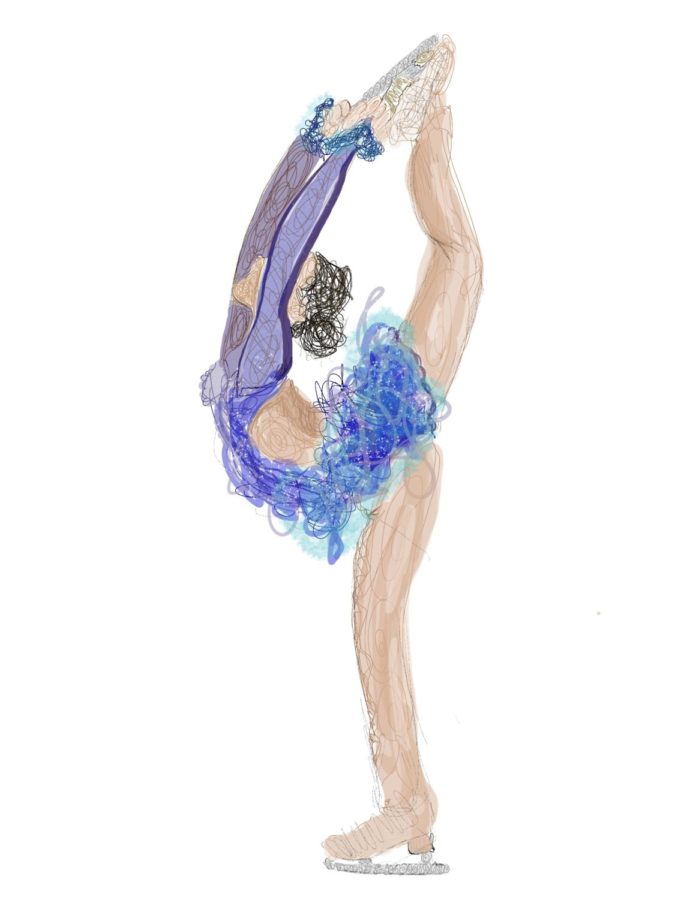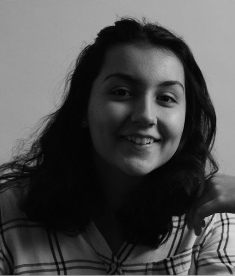Local figure skaters reflect on culture, experiences
In the wake of Kamilia Valieva’s controversial appearance during the Olympics, in which the 15-year-old ice skater was publicly exposed for doping before the competition and then, controversially, allowed to compete, the intense pressures on young athletes have once again floated to the surface of public discussion. Figure skating specifically is a sport that is known for the weight it places on appearance and nearly unachievable body standards, and local Evanston figure skaters have felt this pressure, albeit on a smaller scale.
“You see the high-level skaters, like in the Olympics, [and] you’ll only see slim, small girls. So, if you’re tall, [coaches] will say that you can’t progress fast enough because your body isn’t the right size,” junior Kyla Wellingtonsays.
Wellington explains that her experience skating at Robert Crown has been overwhelmingly positive, mostly due to the influence of the coaches she’s had. But within the greater skating community, she says the toxicity is palpable. Freshman Talia Wisely explains how she’s seen this culture affect young skaters during one of the most vulnerable times in their life: puberty.
“You have these skaters who are trying to grow up and go through awkward phases and things like that. I do know a lot of coaches don’t really take that into consideration, not as much at Robert Crown, but [some coaches] don’t really encourage puberty and gaining weight and stuff like that,” Wisely says.
Middle and high school are formative years when it comes to the way that people in general, and especially girls, perceive their bodies. According to a study by the University of Washington, “At age thirteen, 53 percent of American girls are ‘unhappy with their bodies.’” and this statistic “grows to 78 percent by the time girls reach seventeen.” Young skaters are facing these pressures from all sides—coaches, overarching cultural expectations and even comparisons to other skaters.
“When you’re going through like puberty, and you’re changing and developing you start to get more self-conscious,” freshman Rachel Durango-Cohen says. “You’re competing against the rest of the girls you’re working out with, and if [they’re] doing something crazy intense, or [they’re] so much skinnier than you, it takes a toll on your mental health.”
And often, what these pressures lead to is disordered eating. Junior Caroline Klearmanshares the way that coaches can create an environment that pushes girls into extremely unhealthy eating patterns.
“Not purposefully, but I think a lot of girls delay their puberty due to eating disorders. Like, when I was in seventh grade one of my coaches said I should only be eating 1200 calories, which is not healthy,” Klearman says, “And I’ve had a coach tell me, and everyone else I was training with, that if you get your period once a month, that means you’re eating too much, which is so wrong and stupid. You’re taught in school that [those things] just aren’t true, and that you shouldn’t listen to that. But I think when someone with authority is saying that [those ideas], it sort of overrides.”
In skating, similarly to other ‘aesthetic sports’ like ballet or Irish dancing, unhealthy eating standards are so common that they’ve nearly become normalized. Perhaps one of the biggest problems in all of this is that hardly anything is being done to protect skaters, despite the fact that most people seem to know the dangerous ideologies of the sport. Klearman herself has seen eat
“I’ve definitely seen a lot of girls go through eating disorders, and a lot of the time it takes their parents stepping in and sending them to an inpatient treatment or something like that,” Klearman says “I don’t think there are a lot of stigma’s, just because it’s so common in the sport. It’s like ‘oh, another girl is going to treatment’”
Another major issue within skating culture is race. Often, the image of ‘perfection’ pushed on to skaters is extraordinaially europcentric. At almost all levels of competition, black skaters are not represented nearly as much as their white counterparts. According to NBC, the last time there was a black skater on the U.S. Olympic team was 16 years ago. This lack of diversity has lead to racism within the wider skating community — something which ETHS students have witnessed.
“I noticed when I travel for competitions and go to places like Wisconsin, Iowa, [or] Alabama, you’ll see much of that [racist behavior] also goes along with, body image and how a lot of people think the perfect ice skater is skinny and slim. While I was in Alabama, there was this little black girl and on her team the white people were saying that she won’t progress in skating because of the genetics that a black girl has and how as she grows up, she’s not going to be able to improve like [the white skaters]. So things like that happen. Not at Robert crown, but when I go away. It’s like a common thing.”
But despite all of these issues, people keep skating.
“We love the sport and I think it’s kind of addicting. Like girls definitely know all the toxic sides of it and everything wrong with the sport, but it’s just not something you can give up super easily. It sort of becomes a part of you.”
Your donation will support the student journalists of the Evanstonian. We are planning a big trip to the Journalism Educators Association conference in Nashville in November 2025, and any support will go towards making that trip a reality. Contributions will appear as a charge from SNOSite. Donations are NOT tax-deductible.










